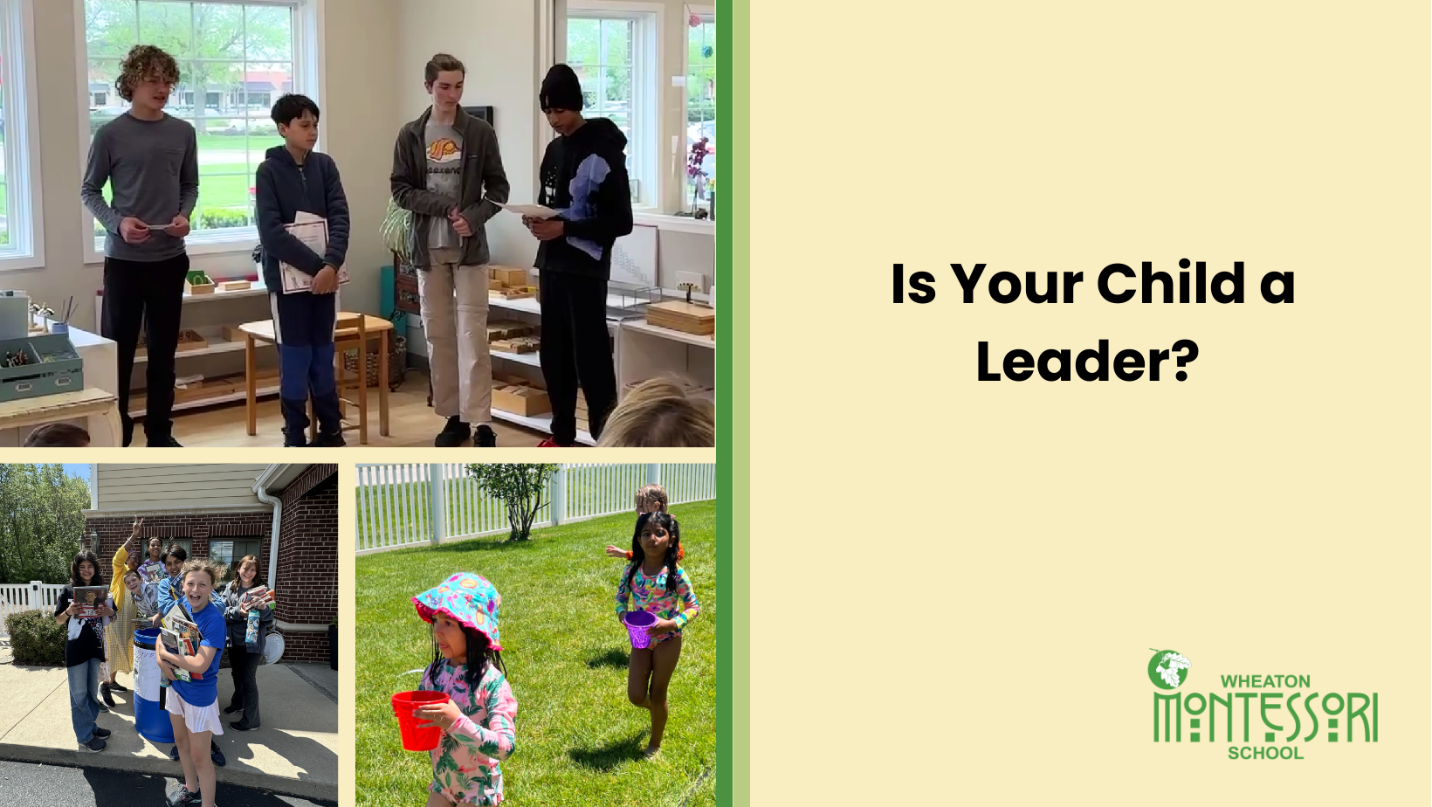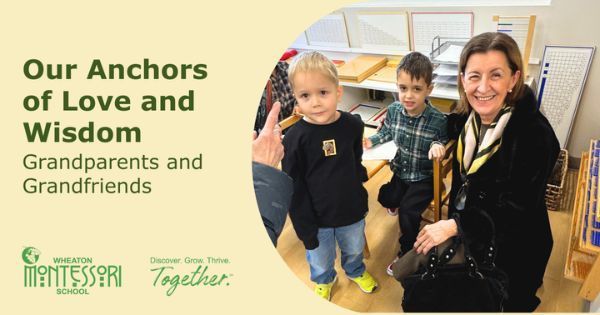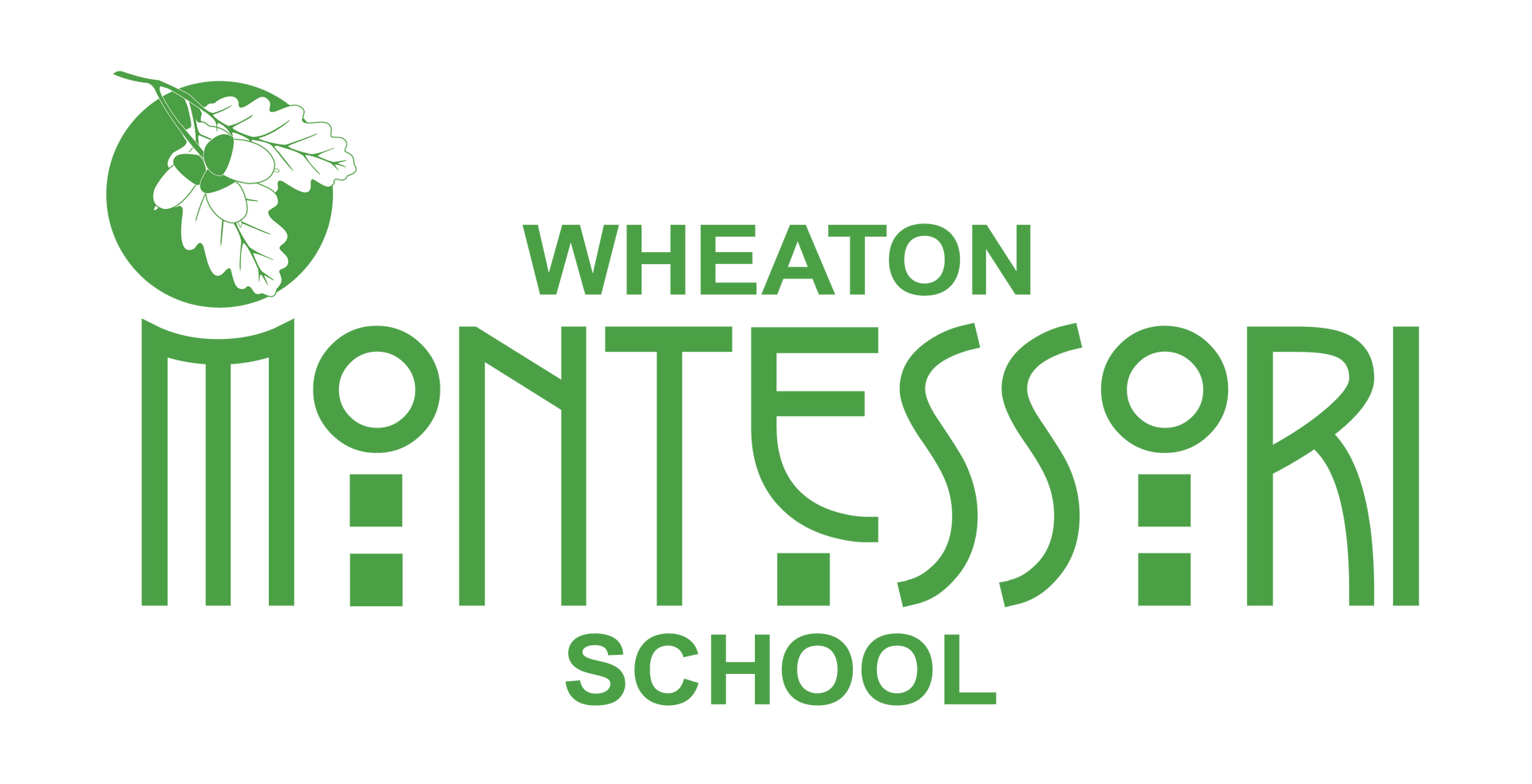
Wheaton Montessori School prides itself on leadership skills as one of many amazing outcomes.
Our students spend multiple years in the same class community of mixed-age children, preschool through kindergarten are together, while 1st-3rd, 4th-6th, and 7th-9th grades are grouped by design.
Children new to their classes are fortunate to be welcomed by helpful peer mentors. Children seek to learn from each other naturally. They have the gift of time to watch others enjoy advancing in knowledge and challenging themselves. Students are surrounded by others happily offering guidance. All students practice their leadership skills by supporting peers in lessons, helping clean up work, and comforting others in moments of disappointment.
Mentorship skills are similar at each level, while the activities increase in challenge based on age. Preschool students commonly assist others when aligning units and thousands in the correct order, sounding out words, and using scissors well. In elementary classrooms, peers write math equations, recommend book titles, and run scientific experiments. Our adolescent young people help each other accurately follow recipes, bravely tend bees, and logically explain their math approaches.
The best part is that your child will transition from observer to leader in their own time. It doesn’t happen for all children at the same time, nor does it need to. And when your child sees themselves as a leader, it is magical!


